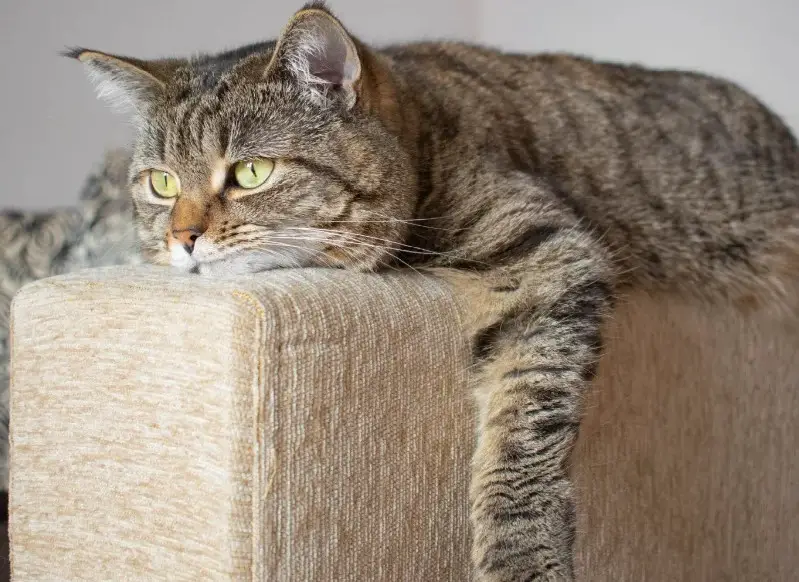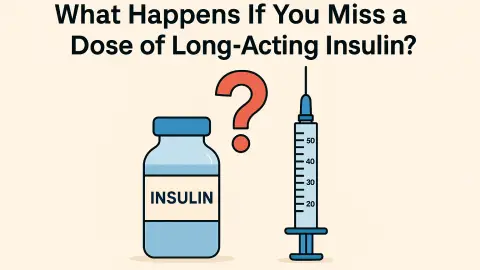Cats with diabetes rely heavily on consistent insulin levels to regulate blood sugar. When insulin is insufficient—due to incorrect dosage, skipped injections, stress, illness, or changes in diet—blood glucose rises and causes noticeable symptoms. Many of these warning signs start subtly and gradually worsen if not addressed promptly.
Recognizing the early indicators of low insulin is critical because prolonged high blood sugar can lead to severe complications, including diabetic ketoacidosis (DKA), dehydration, organ strain, and even life-threatening emergencies. Cat owners who understand these symptoms can intervene sooner, adjust treatment plans with their veterinarian, and protect their cat’s long-term health.
Below is a complete guide to the 10 clear signs of not enough insulin in cats, how each symptom develops, and when to seek immediate veterinary help.
1. Increased Thirst

One of the earliest and most obvious signs of insufficient insulin in diabetic cats is noticeable thirst. When blood sugar rises, the kidneys work harder to filter glucose. Excess glucose spills into the urine, pulling water with it.
Why It Happens
High blood sugar acts like a sponge, drawing water out of the body as the cat urinates. This process forces the cat to drink more to stay hydrated.
What Owners Notice
Cats may visit the water bowl more frequently, drink larger amounts at once, or wake at night to drink. If the water bowl empties faster than usual, this is a strong clue that insulin levels may be inadequate.
2. Frequent Urination
Frequent urination often appears alongside increased thirst and serves as another warning sign of uncontrolled blood glucose.
Why It Happens
Glucose that exceeds the kidney’s filtration capacity causes osmotic diuresis—excessive urination triggered by high sugar concentrations.
What Owners Notice
You may see:
-
Larger clumps in the litter box
-
More frequent litter changes
-
The cat urinating outside the box due to urgency
If urination increases suddenly, it may indicate the current insulin dose is not working effectively.
3. Weight Loss
Weight loss, despite normal or even increased appetite, is a hallmark sign of not enough insulin in diabetic cats.
Why It Happens
Without enough insulin, the body cannot use glucose for energy. As a result, it begins breaking down muscle and fat to fuel itself.
What Owners Notice
Cats may appear:
-
Bonier along the spine or hips
-
Lighter when picked up
-
More sunken in their shoulders
If weight continues dropping week after week, insulin therapy needs reevaluation.
4. Increased Appetite
Cats who are not receiving enough insulin often exhibit a sudden increase in hunger, known as polyphagia.
Why It Happens
Because cells cannot absorb glucose without insulin, the cat’s brain receives a false message: not enough energy. The cat eats more to compensate, but the body still cannot convert food into usable energy.
What Owners Notice
Owners may observe:
-
The cat begging for food
-
Stealing food
-
Crying around mealtime
-
Waking owners early to eat
If the appetite is unusually intense, insulin deficiency is a likely culprit.
5. Lethargy or Weakness
Lethargy—reduced activity, sleepiness, or lack of energy—is one of the most concerning signs of inadequate insulin.
Why It Happens
High blood sugar interrupts normal cellular energy production. Muscles and organs cannot function efficiently, leaving the cat fatigued.
What Owners Notice
Lethargic cats may:
-
Sleep more than usual
-
Avoid play
-
Walk more slowly
-
Struggle to jump onto furniture
If weakness becomes extreme, it may indicate dangerous complications like ketoacidosis.
6. Vomiting
Vomiting is a more advanced sign that the cat’s blood sugar has been high for too long.
Why It Happens
Persistent high glucose can:
-
Lead to dehydration
-
Cause gastrointestinal upset
-
Trigger diabetic ketoacidosis (DKA), which produces toxic ketones
What Owners Notice
Vomiting may occur:
-
Intermittently at first
-
More frequently if ketone levels rise
-
Alongside other symptoms like fatigue and dehydration
Repeated vomiting should never be ignored in diabetic cats.
7. Sweet or Acetone-Like Breath
A sweet, fruity, or acetone-like odor on a cat’s breath is a serious red flag.
Why It Happens
This smell occurs when the body begins producing ketones due to insulin deficiency. Ketones are acidic and toxic in high levels.
What Owners Notice
The odor may resemble:
-
Overripe fruit
-
Nail polish remover
-
Sweet chemicals
This sign is strongly associated with diabetic ketoacidosis and requires emergency attention.
8. Poor Coat Condition
The cat’s coat provides visual clues about internal health. When insulin is not functioning correctly, the coat often loses its shine and softness.
Why It Happens
Lack of insulin disrupts:
-
Nutrient absorption
-
Hydration levels
-
Skin oil production
What Owners Notice
Cats may look:
-
Ungroomed
-
Greasy
-
Scruffy or flaky
-
Matted due to reduced grooming behavior
A deteriorating coat indicates prolonged metabolic imbalance.
9. Hind-Leg Weakness (Neuropathy)
Feline diabetic neuropathy is a common result of chronic high blood sugar, especially when insulin therapy is insufficient.
Why It Happens
High glucose damages nerves controlling the hind legs, weakening the cat’s stance and mobility.
What Owners Notice
You may see:
-
A plantigrade stance (walking on hocks)
-
Difficulty jumping
-
Wobbly movements
-
Decreased muscle mass in back legs
Neuropathy improves with better glucose control but may require months of recovery.
10. Dehydration
Dehydration is both a symptom and a complication of inadequate insulin.
Why It Happens
Because the cat urinates more to flush excess glucose, dehydration develops quickly without enough water intake.
What Owners Notice
Symptoms include:
-
Dry gums
-
Skin tenting (slow return when gently lifted)
-
Sunken eyes
-
Lethargy
Severe dehydration is dangerous and requires prompt veterinary treatment.
When to Seek Veterinary Help
Owners should contact a veterinarian immediately if their cat shows:
-
Persistent vomiting
-
Acetone-smelling breath
-
Extreme lethargy
-
Difficult or labored breathing
-
Hind-leg collapse
-
No appetite for more than 24 hours
These signs may indicate diabetic ketoacidosis, which can be fatal without emergency care.
What Causes Insulin Levels to Drop in Cats
Incorrect Dosage
Even slight changes in insulin needs can create noticeable symptoms.
Poor Injection Technique
Insulin may not absorb properly if injected into:
-
Fur instead of skin
-
Scar tissue
-
Inflamed skin
Missed Injections
Accidental missed doses can quickly destabilize blood sugar.
Bad or Expired Insulin
Insulin loses potency when:
-
Exposed to heat
-
Shaken
-
Stored incorrectly
Infection or Illness
Illness increases insulin resistance, requiring temporary dose adjustments.
Dietary Changes
Switching food types, ingredients, or feeding schedules affects insulin needs.
How to Correct Low Insulin Levels Safely
Speak with Your Veterinarian
Never adjust insulin doses without professional guidance.
Check Blood Glucose Frequently
Home monitoring devices help track patterns more accurately.
Review Insulin Handling
Ensure proper:
-
Storage
-
Mixing (if required)
-
Administration techniques
Evaluate Diet and Feeding Schedule
A consistent feeding routine helps stabilize glucose.
Monitor Hydration
Encourage water intake or use wet food to support hydration.
FAQs About Not Enough Insulin in Cats
Can a cat suddenly need more insulin?
Yes. Stress, infections, pain, or diet changes can increase insulin requirements.
What happens if a diabetic cat misses a dose?
Blood sugar rises, leading to thirst, urination, fatigue, and potentially dangerous complications.
Can too little insulin cause ketoacidosis?
Yes. Prolonged insulin deficiency is the leading cause of feline DKA.
Does increasing thirst always mean low insulin?
In diabetic cats, increased thirst is strongly associated with high blood glucose.
Should I check my cat’s glucose at home?
Home monitoring is recommended and helps identify insulin problems earlier.
How fast can symptoms appear?
Some signs, like thirst and appetite changes, appear within hours or days. More serious symptoms build over time.
Can neuropathy improve once insulin levels stabilize?
Yes, with proper treatment, many cats gradually regain strength.
Is vomiting always a sign of low insulin?
Vomiting in a diabetic cat is concerning and often linked to high glucose or DKA.
When should I go to emergency care?
Seek emergency help if your cat has fruity breath, refuses to eat, vomits repeatedly, or shows collapse.
Conclusion
Recognizing the signs of not enough insulin in cats is essential for preventing serious complications and maintaining long-term health. Increased thirst, excessive urination, weight loss, appetite changes, lethargy, vomiting, fruity breath, and hind-leg weakness all signal that blood sugar may be dangerously high. The earlier cat owners identify these symptoms, the faster they can adjust treatment and restore stability.
Monitoring your cat closely, maintaining consistent insulin dosing, and working closely with your veterinarian will help ensure safer diabetes management and a healthier, more comfortable life for your cat.
Disclaimer: This article is for informational purposes only and does not constitute medical advice. Always consult a licensed veterinarian for diagnosis and treatment of feline diabetes.


